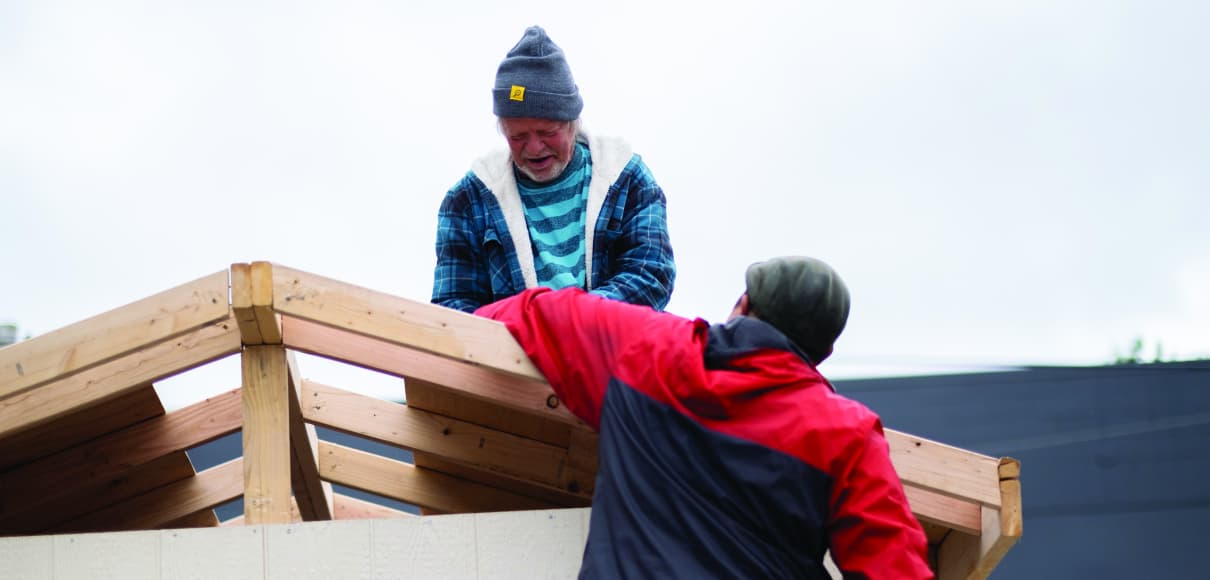During a two-day build marathon, SPU students, faculty, staff, and community members began construction on a tiny house for a future, city-sanctioned village of people experiencing homelessness.
Seattle is one of the first cities in the country to allow tiny house villages on public land. It’s one of many programs helping people find temporary shelter.
Building a tiny house was the idea of Paul Lee, lab coordinator in the Engineering and Computer Science Department.
“All my adult life, I’ve tried to find opportunities to use my time and skills to help those experiencing homelessness,” said Lee, who worked as a maintenance technician for LIHI (Low Income Housing Institute) before coming to SPU. “If we see our neighbors suffering for whatever reason, we need to be there.”
“I feel it’s our responsibility as a Christian community to find ways to use our gifts to ‘love our neighbors’ in as many ways as possible.” —Paul Lee
He volunteered at a tiny village near his home and began to think about how his engineering students could get involved. “I feel it’s our responsibility as a Christian community to find ways to use our gifts to ‘love our neighbors’ in as many ways as possible,” Lee said. Lee proposed building a tiny home to SPU’s Committee on Homelessness. With the help of an SPU Innovation Grant and personal donations, construction began. More than 30 volunteers finished the house in five days.
“There was a lot of positive reinforcement and encouragement during the day as we learned new skills,” said Sridevi Kandui, an SPU student who said she was unaware of the homelessness crisis until a series of random events and an email looking for volunteers to build the homes caught her attention. She enjoyed the project so much she signed up to build more houses with LIHI.
Seattle Pacific has taken a public role in working to address Seattle’s growing homelessness crisis. Tent City 3, a city-sanctioned, self-managed community of men and women experiencing homelessness, set up residence on campus three times. Their temporary stays provided SPU community members a chance to see homelessness firsthand.
Lee says he saw a lot of light bulbs go on as students unpacked misconceptions about the homeless. “[The events] built a sense of community, and I saw that when we were building the house.”




